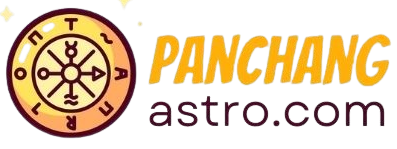What’s on the Agenda? Explore Today’s Calendar of Activities
In our fast-paced world, staying organized and on top of our daily tasks is becoming increasingly important. With a myriad of responsibilities and commitments, it is crucial to have a clear understanding of what’s on the agenda for the day. Fortunately, advancements in technology have made it easier than ever to plan and manage our daily activities efficiently. In this article, we will explore the importance of having a calendar of activities, how it can benefit us, and provide a comprehensive guide on how to make the most of it. Additionally, we will address some frequently asked questions to help you better navigate this essential tool.
Why is having a calendar of activities important?
1. Time management: A calendar of activities allows you to allocate your time effectively. By having a clear overview of your day, you can avoid double-booking appointments or forgetting important tasks.
2. Increased productivity: When you have a well-organized schedule, you can prioritize your activities and focus on the most important tasks. This helps in avoiding procrastination and ensures that you make the most of your time.
3. Reduced stress: When you know what’s coming up, you can plan and prepare for it. This decreases the likelihood of last-minute rushes and helps you maintain a sense of control over your day.
4. Improved work-life balance: By effectively managing your time, you can allocate specific periods for work, leisure, and personal commitments. This enables you to maintain a healthy work-life balance and avoid burnout.
How to make the most of your calendar of activities?
1. Centralize your calendar: Use a digital calendar application or a physical planner to keep all your activities in one place. This ensures that you have a comprehensive view of your day, week, or month.
2. Set reminders: Utilize reminders to alert you before an event or task, allowing you to mentally prepare and allocate sufficient time for preparation.
3. Categorize activities: Use color coding or specific categories to differentiate between work-related tasks, personal commitments, and social events. This makes it easier to identify and prioritize different activities.
4. Review and adjust regularly: Take a few minutes at the end of each day or the beginning of the next to review your calendar and make any necessary adjustments. This helps you stay on top of any changes and ensures your schedule remains up to date.
5. Be realistic: Avoid overloading your calendar with too many tasks or activities. Leave room for breaks and unexpected events to maintain flexibility and reduce stress.
FAQs:
1. Should I use a digital or physical calendar?
The choice between a digital or physical calendar depends on personal preference. Digital calendars offer the advantage of syncing across multiple devices and sending reminders, while physical planners provide a tangible experience and do not rely on technology.
2. How far in advance should I plan my activities?
The planning horizon depends on individual needs and preferences. Some people prefer planning day by day, while others plan their week or even month in advance. Experiment with different timeframes to find what works best for you.
3. How do I handle overlapping or conflicting activities?
When faced with overlapping or conflicting activities, evaluate their importance and prioritize accordingly. If possible, try to reschedule or delegate tasks to avoid unnecessary stress.
4. What if I am unable to complete all the tasks on my calendar?
It is common to encounter unforeseen circumstances or tasks taking longer than anticipated. In such cases, review your calendar and reschedule or reprioritize tasks accordingly. Avoid carrying over unfinished tasks to the next day, as it can create a cycle of incomplete work.
In conclusion, having a calendar of activities is an essential tool for effective time management, increased productivity, reduced stress, and maintaining a healthy work-life balance. By centralizing your schedule, setting reminders, categorizing activities, and regularly reviewing and adjusting, you can make the most of this valuable resource. Whether you prefer a digital or physical calendar, finding a system that works for you is crucial. Remember to be realistic with your planning and adapt to unexpected changes. With an organized agenda, you can tackle your day with confidence and achieve your goals efficiently.
